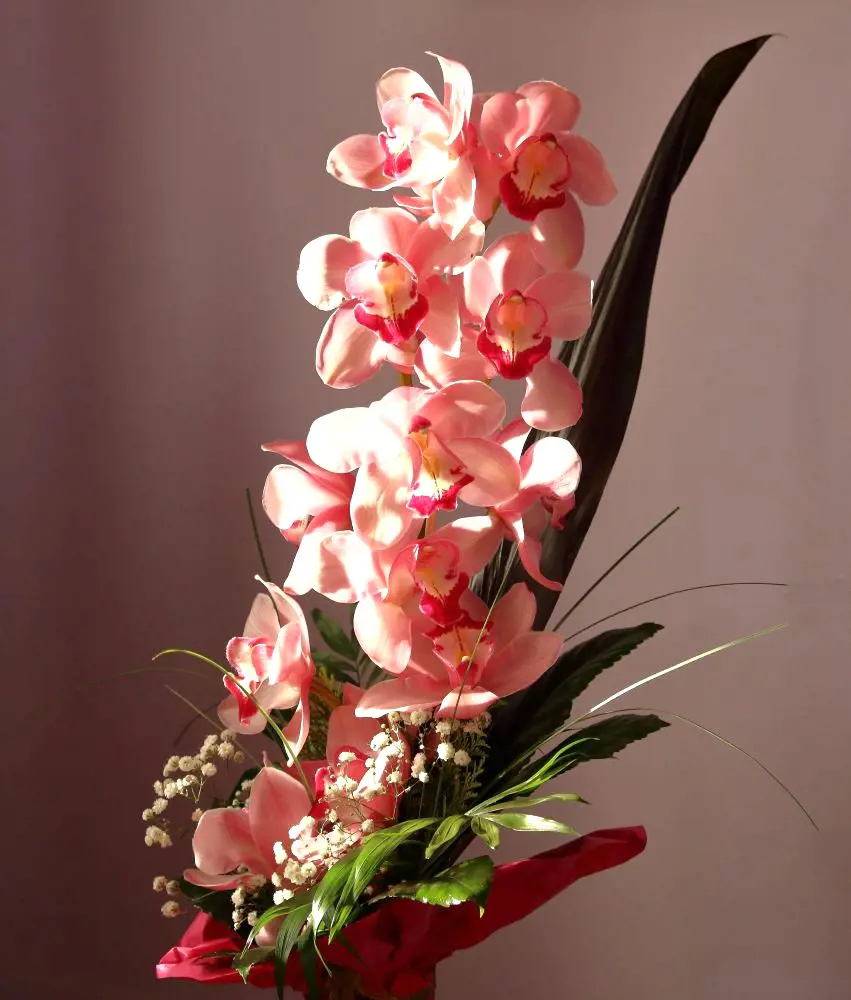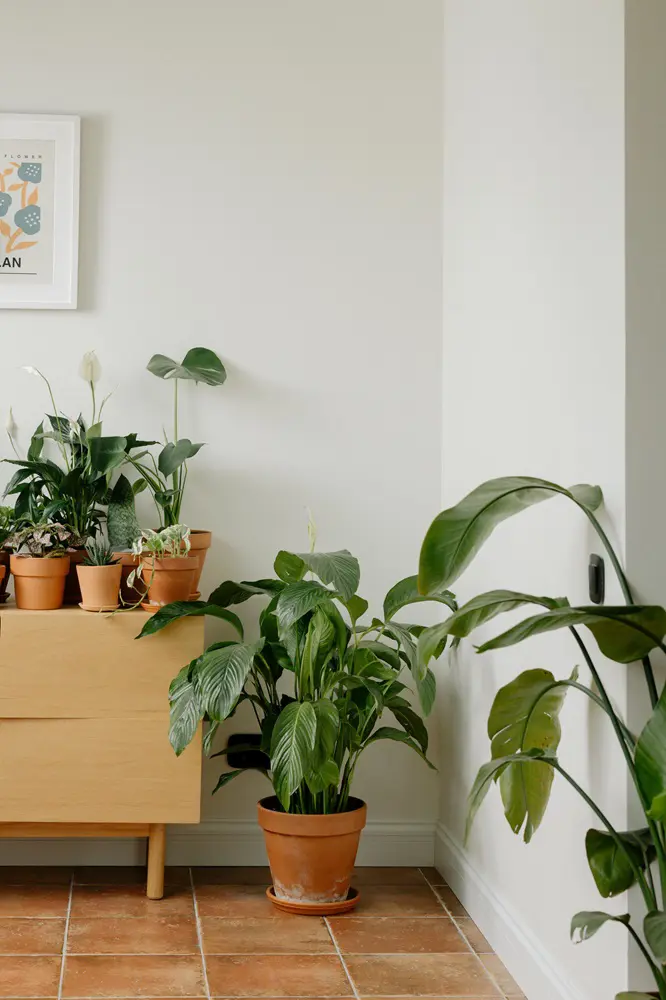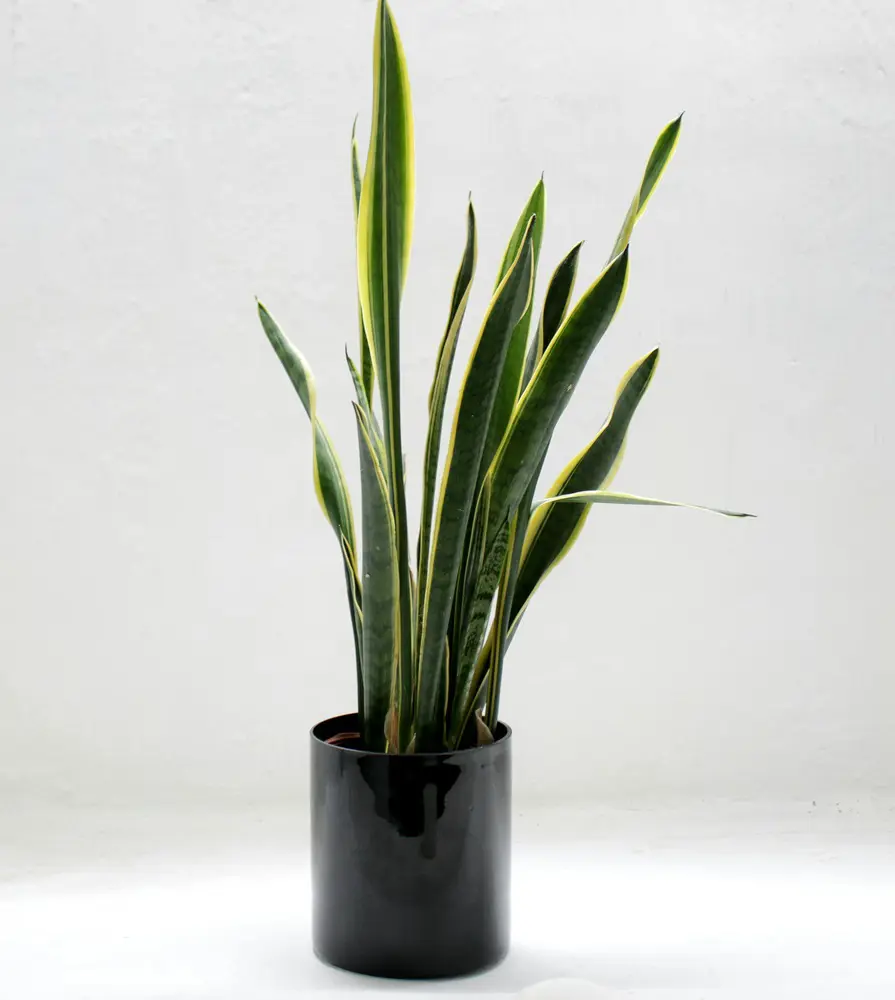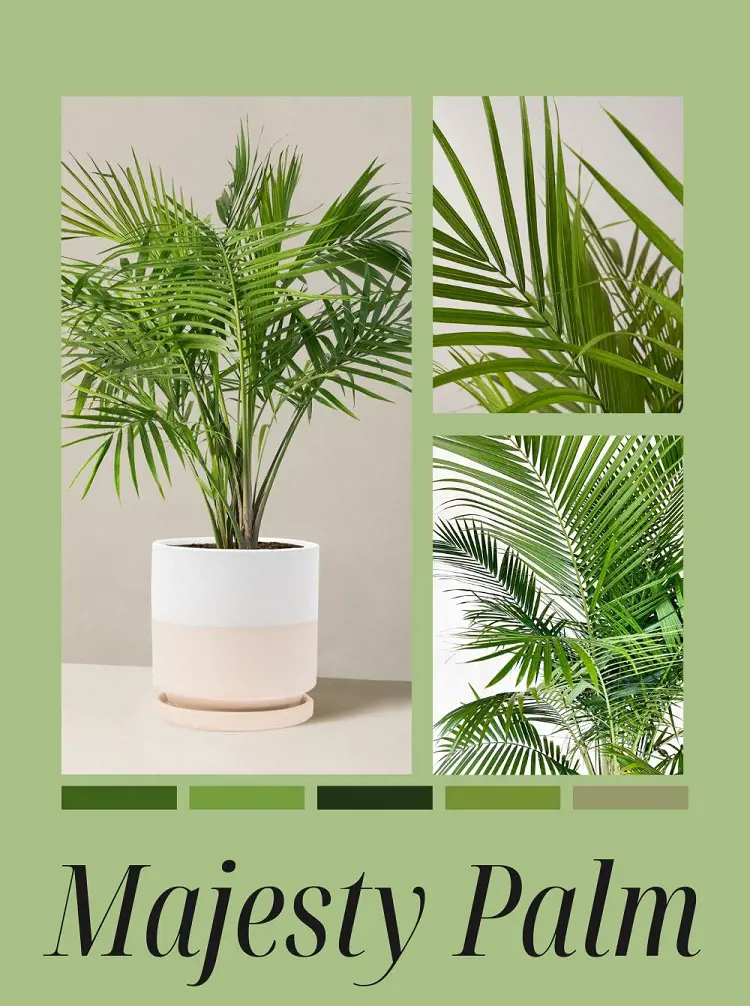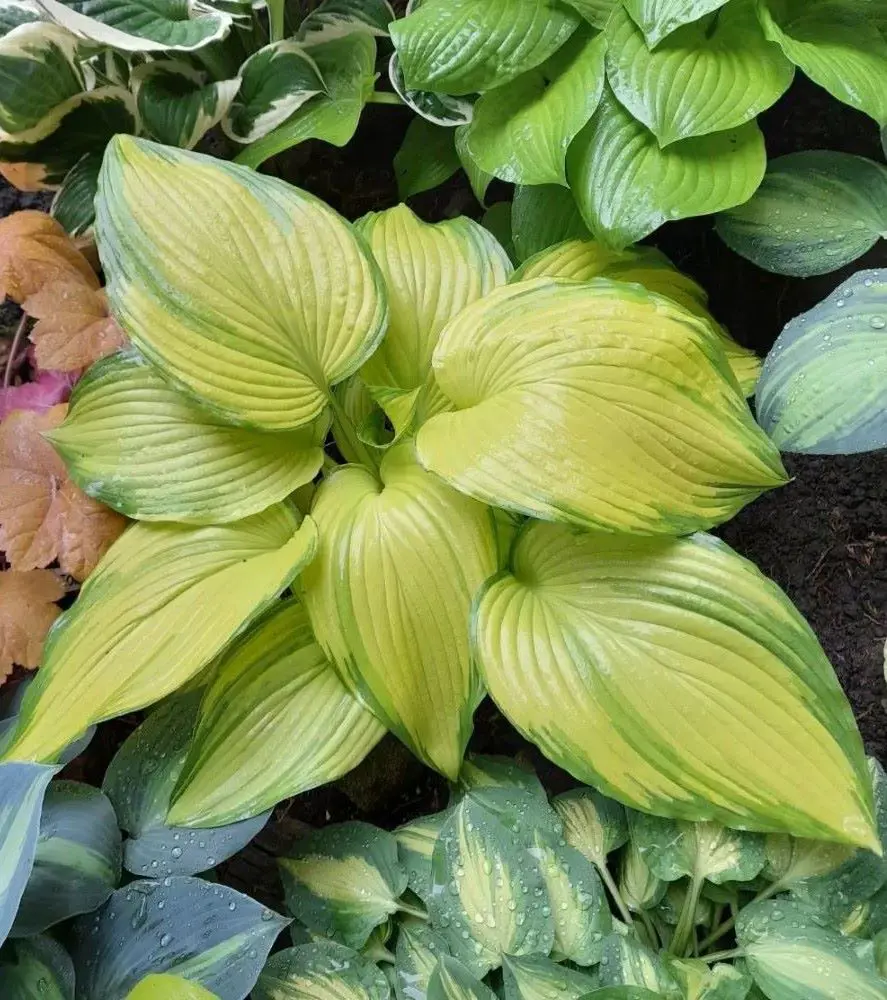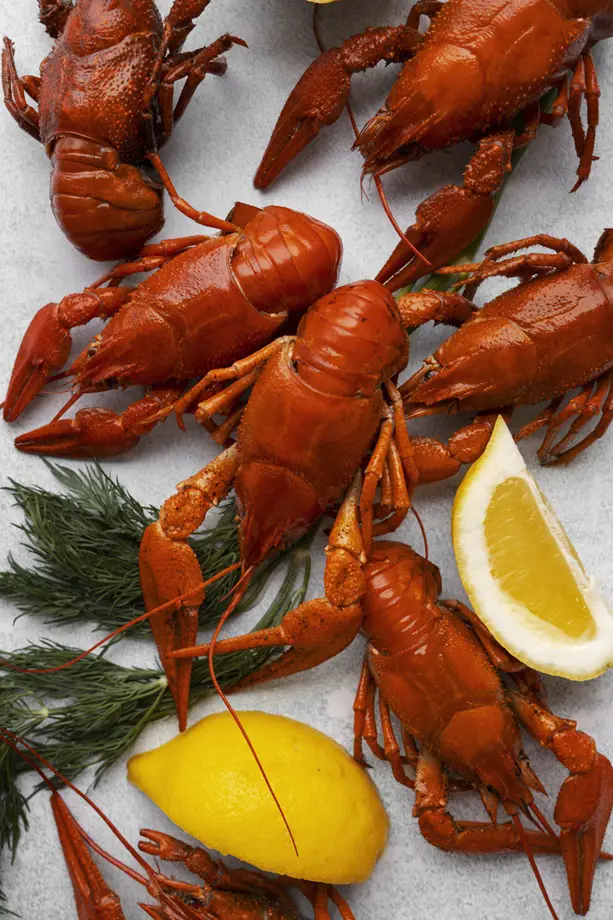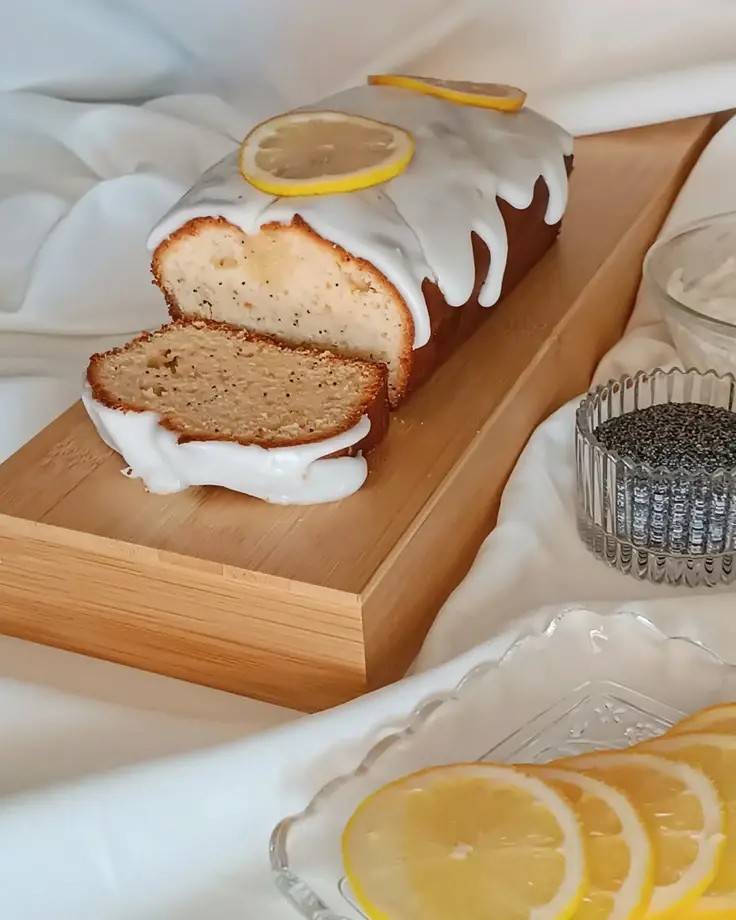How To Grow And Care For Rhubarb Plants
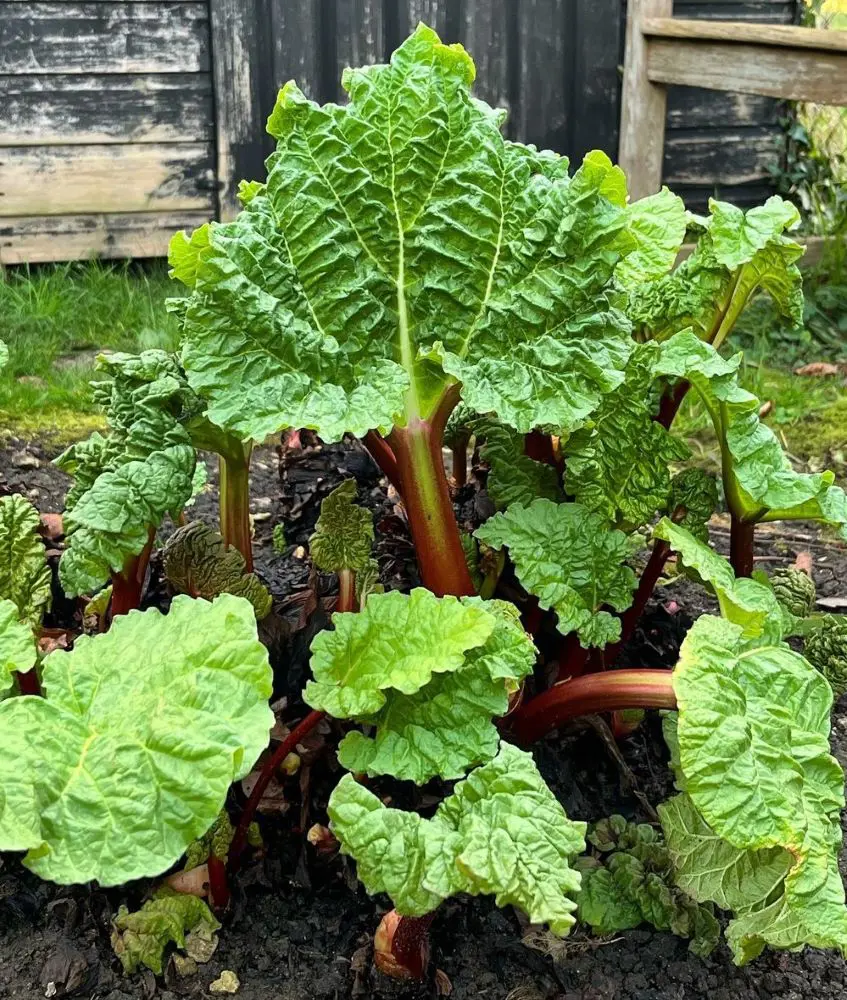
This post may contain affiliate links. If you make a purchase through links on our site, we may earn a commission.
Rhubarb is a low-maintenance plant, requiring minimal care once established. This deliciously enduring vegetable with a unique blend of tartness and sweetness has impressive culinary allure and cultivating this plant offers a multitude of benefits.
With proper care, a single rhubarb plant can provide an abundant supply of fresh stalks for many seasons to come. So, let us learn how to grow this beneficial plant in your home garden properly.
Rhubarb Plants Overview
| Scientific Name | Rheum rhabarbarum |
| Common Name | Rhubarb |
| Family | Polygonaceae |
| Type | Perennial herbaceous plant |
| Size | 2 to 3 feet tall |
| Sunlight Requirement | Full sun to partial shade |
| Soil Type | Well-draining |
| Soil pH | Slightly acidic to neutral |
| Growing Season | Spring to early summer |
| Native Area | Eastern Europe, specifically Siberia |
| Zone | 3-8 (USDA) |
What Is A Rhubarb Plant?
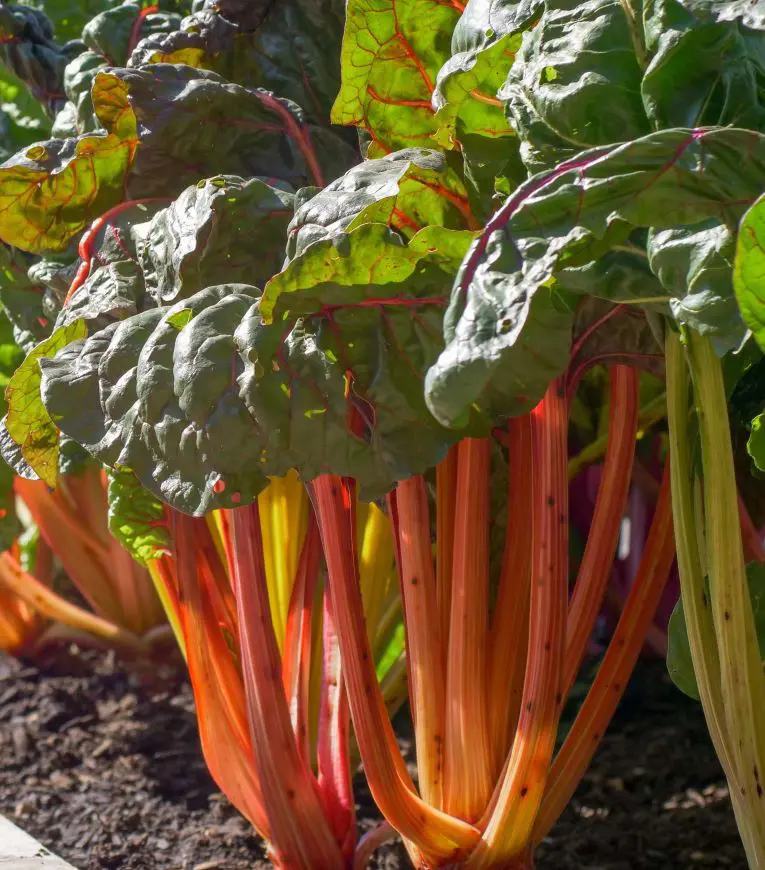
Rhubarb is a perennial vegetable plant commonly grown for its edible stalks. Known for its tart flavor, rhubarb is often used in cooking and baking, especially in pies, sauces, and desserts. The stalks are the edible part of the plant, while the leaves contain oxalic acid and are toxic if consumed in large quantities.
This plant is typically grown in cooler climates and requires well-drained soil and regular watering to thrive. Its stalks grow rapidly during the spring and early summer months, reaching 2 to 3 feet in height and becoming thicker as the season progresses. The color of the stalks varies depending on the variety, ranging from pale green to deep red.
In addition to its culinary uses, it has been utilized in traditional medicine for its potential health benefits. This plant contains compounds such as anthraquinones, which possess laxative properties and may aid digestion. It's also been used in herbal remedies for constipation and gastrointestinal discomfort.
Rhubarb Care
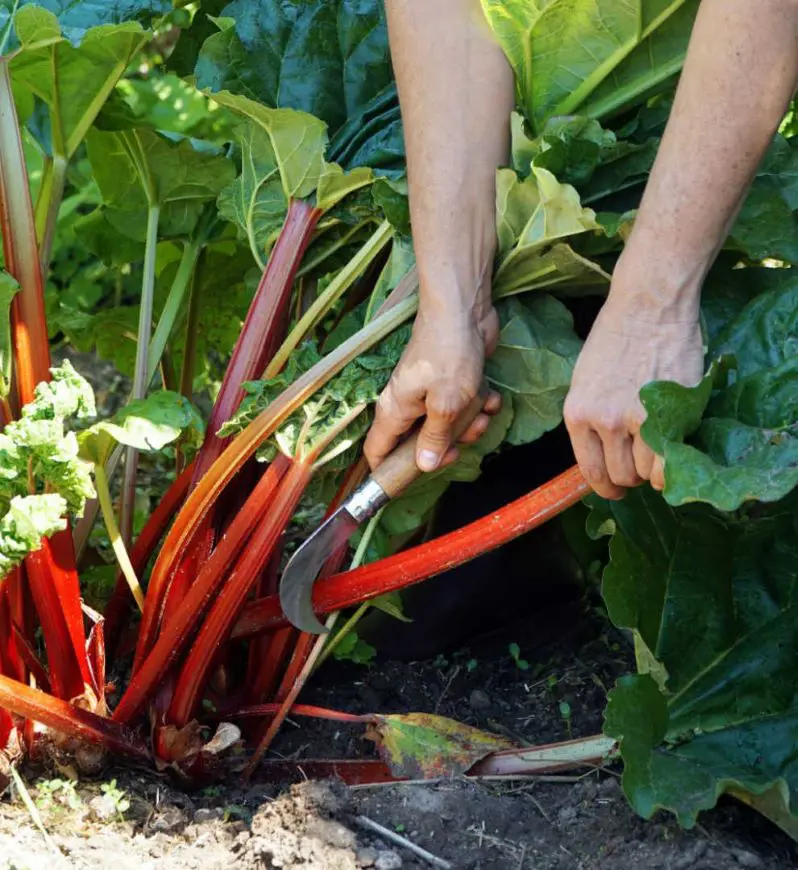
With the right care and attention, you can successfully grow and care for rhubarb in your own home garden. Despite its hardy nature, neglecting proper care can result in reduced harvests and overall plant health. Regular attention is required to address common issues such as pests, diseases, and soil nutrition.
Light
Rhubarb plants flourish in locations with ample sunlight, ideally receiving 6 to 8 hours of direct sunlight daily. However, they can also tolerate partial shade, especially in regions with intense heat. When selecting a site for planting, prioritize areas that receive morning sunlight and are sheltered from harsh afternoon sun, particularly in hotter climates.
Soil
They prefer well-draining, loamy soil enriched with organic matter such as compost or aged manure. This type of soil retains moisture while allowing excess water to drain away, thus preventing waterlogging and potential root rot.
Additionally, it's important to ensure that the soil pH falls within the slightly acidic to neutral range of 6.0 to 7.0, as this facilitates nutrient uptake and promotes overall plant health.
Water
Regularly water the Rhubarb plant, especially during periods of active growth and when they are producing stalks. However, it's crucial to avoid overwatering, since soggy soil can promote root diseases. Aim to keep the soil evenly damp by watering deeply whenever the top inch of the soil feels dry to the touch.
For watering, you can use either regular tap water or rainwater. If tap water is excessively hard and contains high levels of salts, it might be beneficial to use filtered water or rainwater only. This plant can be sensitive to high levels of certain minerals.
Temperature
They require winter dormancy, during which temperatures dip below 40°F (4°C) to stimulate root development, ensuring robust growth in the following spring. In warmer regions, it is important to provide afternoon shade to shield plants from excessive heat, as prolonged exposure to high temperatures can stunt growth and reduce productivity.
Humidity
Although these plants are generally tolerant of varying humidity levels, excessive moisture in the air can heighten the risk of fungal diseases like powdery mildew and crown rot.
To minimize humidity-related issues, maintain proper spacing between plants to encourage air circulation and reduce moisture buildup. Also, avoid overhead watering, as damp foliage can worsen humidity levels and create favorable conditions for fungal pathogens.
Fertilization
In early spring, apply a balanced fertilizer or one high in nitrogen to encourage vigorous leaf growth. Avoid fertilizers with high phosphorus content, as excessive phosphorus can inhibit the uptake of other essential nutrients.
Throughout the growing season, supplement with organic fertilizers such as worm castings or fish emulsion to replenish soil nutrients and sustain healthy growth.
Mulching And Weeding
Apply a layer of organic mulch, such as straw, shredded leaves, or compost, around the base of plants to retain soil moisture, suppress weeds, and regulate soil temperature. During the growing season, replenish the mulch as needed to maintain a depth of 2 to 3 inches.
Regularly remove weeds from around the rhubarb plants to prevent competition for nutrients, water, and sunlight, but be careful not to disturb the shallow roots of these plants while weeding.
Pruning
Remove any flower stalks (bolts) that emerge from the center of the plant as soon as they appear, as flowering can divert energy away from stalk production, resulting in smaller stalks. Trim away other damaged and diseased foliage throughout the growing season to maintain plant health and appearance.
Winter Care
Rhubarb plants can withstand some cold temperatures, but prolonged exposure to extreme cold can damage the plant's crowns and roots. So, after the first frost hits, you need to tidy up the garden bed. This involves cutting back the foliage to ground level and removing any debris or dead plant matter.
Another effective method is to apply a thick layer of mulch around the base of plants in late fall. This layer acts as insulation, shielding the roots from freezing temperatures and reducing the risk of damage caused by frost. By providing this extra layer of protection, you can help ensure the survival of delicate root systems through the harsh winter months.
Dividing Rhubarb Plant

Over time, rhubarb plants can become overcrowded, leading to reduced vigor and productivity. To address this, divide every 4 to 5 years, ideally in early spring or late fall. It's recommended to dig up the rhubarb crowns and divide them into smaller sections using a clean knife or shovel. Then, replant the divisions in freshly prepared soil, spacing them adequately.
Here is how you do it:
- Begin by carefully digging up the rhubarb crowns from the soil, ensuring you excavate around the entire plant to lift it with minimal damage.
- Using a sharp knife, gently divide the rhubarb crowns into smaller sections. Make sure each section has a portion of the crown and a healthy bud attached.
- Take your time during this process to avoid damaging the roots or crowns excessively.
- Once divided, replant the sections in freshly prepared soil, making sure to dig holes large enough to accommodate the root system comfortably.
- Space the replanted divisions adequately, allowing room for future growth and development.
- Water the newly transplanted plants generously to help settle the soil and support their establishment in their new locations.
How To Grow Rhubarb Plant
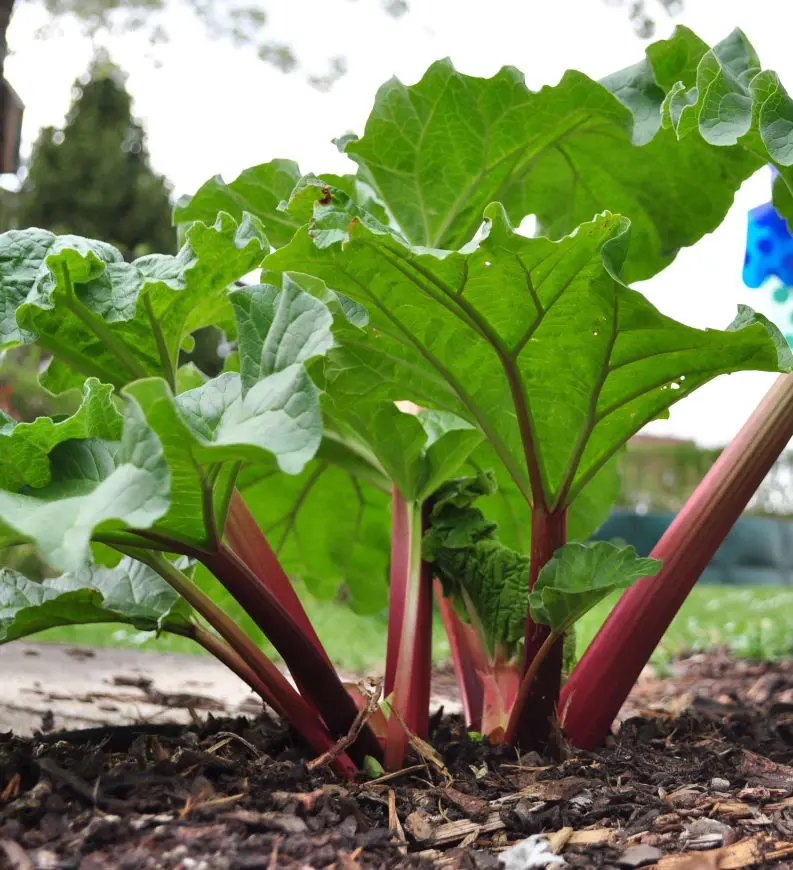
Plant your rhubarb in early spring, ideally in March or April, to allow it to establish before the summer heat. This timing facilitates strong root development and optimal growth for a bountiful harvest in late spring to early summer.
These plants can be grown using two methods: planting the crown directly into the soil or growing from seeds. The seed method tends to take more time to mature, so the most common approach is planting the crown.
1. Planting Crowns
Planting rhubarb crowns is generally easier and more reliable for home gardeners. Crowns are readily available at nurseries and garden centers, and they already have a developed root system, which helps them establish quickly once planted.
Materials Needed:
- Rhubarb crown (purchased from a nursery or garden center)
- Shovel
- Compost or other organic matter
- Balanced organic fertilizer
Steps:
- Pick a location: Rhubarb flourishes in well-draining soil with plenty of organic matter, so it's best to select a sunny location in your garden that receives at least 6 hours of direct sunlight daily. Ensure the soil is fertile and loamy, with good drainage to prevent waterlogging.
- Prepare the planting hole: Before planting, prepare the soil by digging a hole about 1-2 feet deep and incorporating compost or well-rotted manure to improve fertility and drainage.
- Planting: Place the crown in the center of the hole with the buds facing upwards. The top of the crown should be about 2 inches below the soil surface. When planting multiple crowns, space them at least 3 feet apart.
- Watering: After planting, water the crowns thoroughly to settle the soil around the roots. Keep the soil consistently moist, but not waterlogged, especially during dry periods.
- Mulching: Apply a layer of mulch around the base of the plants to conserve moisture, suppress weeds, and regulate soil temperature.
- Fertilization: These plants benefit from annual fertilization. In early spring, apply a balanced fertilizer or compost around the plants according to package instructions.
- Maintenance: Remove any weeds regularly to prevent competition for nutrients and water. Remove any flower stalks that emerge during the first year to promote strong root and crown development.
- Harvesting: Avoid harvesting during the first year to allow the plants to establish. In the second year, you can start harvesting stalks when they are about 12-18 inches long.
2. Sowing Seeds
While less common, rhubarb can also be grown from seeds. This method requires more patience as it takes longer for the plants to reach maturity compared to the crown method. But, it allows you to choose specific varieties and grow them from scratch.
Materials Needed:
- Rhubarb seeds
- Seed starting trays or pots
- Seed compost
- Watering can
- Shovel
Planting:
- Sow seeds indoors in pots or modules filled with seed compost around March or April.
- Maintain consistent moisture and provide adequate light for germination.
- Once seedlings emerge and are established, thin them out to allow for proper growth.
- Transplant the seedlings to their final location in the fall or the following spring.
Rhubarb Plant Types
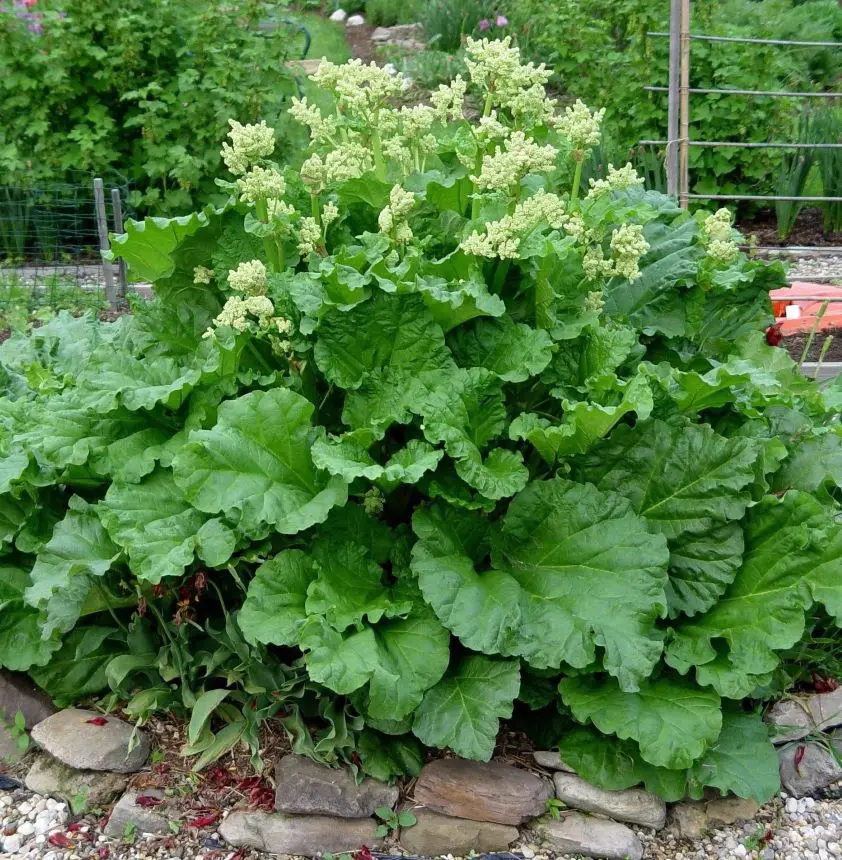
There are over 60 species of rhubarb available, each with its unique characteristics like color, flavor, and harvesting time. Here are some of the most popular varieties:
Victoria: This is a classic and widely grown variety, known for its thick, red-and-green stalks with a good balance of sweetness and tartness. It matures in May and is a good all-purpose choice for various culinary uses.
Timperley Early: This early-maturing variety boasts pink-red stalks that fade to green in warmer weather. It is a good choice for those who want to enjoy rhubarb early in the season.
Livingstone: This British variety is unique for having two harvesting seasons, once in spring and again in autumn. It produces juicy red stalks that are nearly stringless and have a pleasant flavor.
Canada Red: This variety is known for its large size, with stalks reaching up to 20 inches long. It has a solid red exterior and red-to-green flesh, with a slightly more fibrous texture compared to some other varieties.
The Sutton: Another popular maincrop variety, this Sutton produces long red or green stalks with a good flavor. It's known for being reliable and easy to grow, maturing from late May onwards.
Challenges And Issues With Rhubarb Plant

Growing a rhubarb plant is an exciting journey, but it can still encounter some challenges along the way. Some of these challenges include:
Crown Rot
Cause: Crown rot is a serious issue that can lead to plant death if not addressed promptly. The main cause of crown rot is excessive moisture around the plant's base, which creates a favorable environment for fungal pathogens.
Solution: Improve soil drainage by incorporating organic matter into the soil and being mindful not to overwater the plant. Also, remove any affected plant material and apply fungicides to control disease spread.
Yellowing Leaves
Cause: One common cause of this problem is nutrient deficiency, particularly a lack of nitrogen. When plants don't receive an adequate supply of this nutrient, chlorophyll production decreases, which results in the leaves turning yellow.
Solution: This deficiency can be addressed by applying a balanced fertilizer to the soil. First, check soil pH and nutrient levels, then amend the soil with appropriate fertilizers to correct any deficiencies.
Stalk Infection
Cause: Stalk infection is typically caused by fungal diseases like Rhizoctonia or Phytophthora, favored by poor drainage, overcrowding, or contaminated soil. These fungi thrive in moist conditions, leading to rotting of the stalks and affecting plant health.
Solution: To prevent this issue, ensure proper drainage, avoid overcrowding, and maintain good air circulation. Promptly remove and destroy infected stalks and apply fungicides labeled for rhubarb disease control, following instructions carefully.
Recent posts
Plant Care
Plant Care
How To Take Care Of An Orchid Plant? 11 Tips And Tricks
If you love gorgeous orchids but are worried they're too high-maintenance, don't worry. This guide is like a cheat sheet for orchid newbies. Forget fancy words and confusing schedules — we're talking about how to take care of an orchid pla...
Plant Care
How To Grow and Care For Peace Lily Plant
The Peace Lily is an indoor plant that is most valued for its beautiful and shiny green leaves as well as the white blooms. Hard and tolerant, it’s naturally a low-maintenance addition to your plant collection. If you are confused, let us tell ...
Plant Care
Pothos Plant Care And Growing Guide
Adding a Pothos plant (Devil’s Ivy) to your home benefits the environment and aesthetic of your personal space. It's easy to maintain and is loved for it's ability to enhance indoor air quality by removing toxins like formaldehyde, benzene, and...
Plant Care
Snake Plant Care and Growing Guide
Snake plants require low maintenance, and low light and are almost impossible to kill, making them a perfect plant for beginners and seasoned gardeners. In this guide, we will explore essential care tips and optimal growing conditions for snake plant...
Plant Care
How To Plant, Grow and Care Majesty Palm
The majestic palm, scientifically known as Ravenea rivularis, makes for a stunning indoor tree with its lush and grand fronds. Originating from Madagascar's river banks, this resilient houseplant is cherished not only for its beauty but also for its ...
Plant Care
How To Grow And Care For A Hosta Plant
Hosta plants are widespread perennials, often grown for their beautiful and diverse foliage. They are extremely easy to care for and can thrive in various conditions, particularly shade or semi-shade. These hardy plants can last for many years and re...
